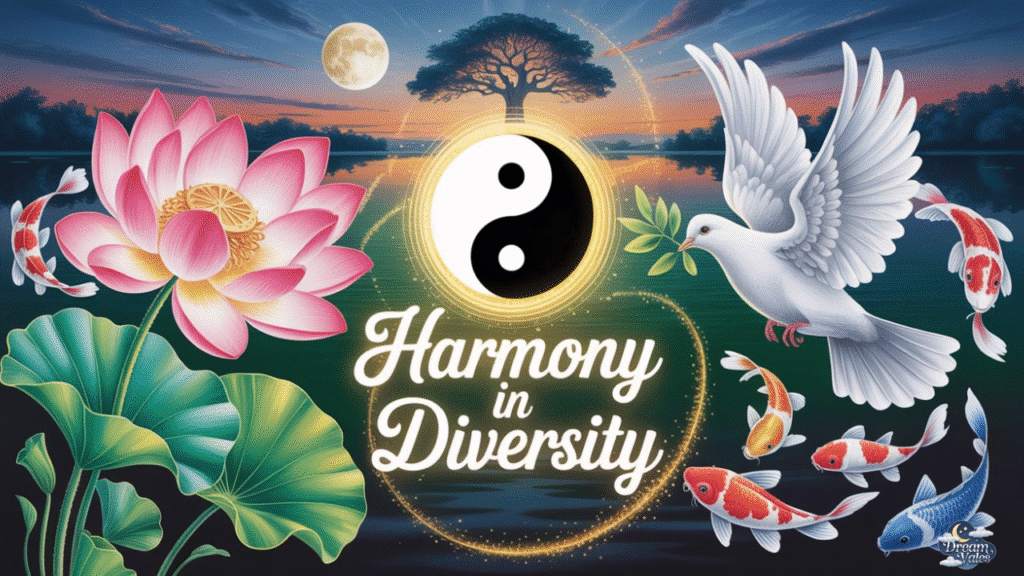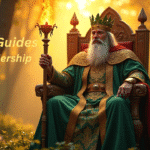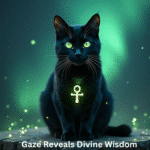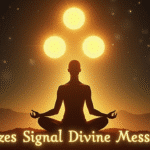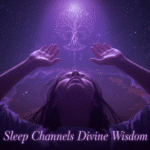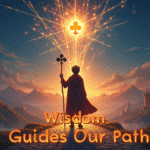Throughout human history, symbols of harmony have transcended language barriers, cultural differences, and religious divides. These powerful visual representations speak to something fundamental within us—our deep yearning for balance, unity, and peace.
Symbols of harmony appear throughout art and culture, showing ideas of peace, balance, and unity. These symbols help express deep human values shared across different cultures.
From ancient cave paintings to modern digital art, these harmonious motifs continue to resonate across generations. The power of symbols lies in their ability to communicate complex emotions and concepts instantly.
A single glance at the yin-yang symbol immediately conveys the concept of balance. The dove’s silhouette instantly evokes thoughts of peace. These artistic symbols of peace have become humanity’s universal vocabulary for expressing our highest aspirations.
Why Harmony Symbols Matter in Our Modern World
Cultural harmony becomes increasingly important as our world grows more interconnected. These signs of togetherness serve as bridges between different communities, offering common ground where understanding can flourish. They remind us that despite our differences, we share fundamental desires for peace and unity.
In today’s digital age, these symbols have found new life across social media platforms and virtual spaces. Their enduring relevance proves that certain human needs remain constant regardless of technological advancement. The visual language of harmony continues to evolve while maintaining its core meaning.
The Psychology Behind Harmony Symbols
Carl Jung’s groundbreaking work on the collective unconscious helps explain why certain symbols resonate universally. These archetypal images tap into shared human experiences that transcend individual cultures.
The mandala, for example, appears in various forms across completely separate civilizations, suggesting deep psychological connections.
Neuroscience research reveals that our brains are naturally drawn to symmetrical patterns and balanced compositions. This biological predisposition explains why geometric patterns and harmonious designs feel inherently pleasing.
The visual cortex processes these symbols differently than random images, creating immediate emotional responses.
| Symbol Type | Psychological Effect | Brain Response |
|---|---|---|
| 🔄 Circular patterns | Sense of completeness | Enhanced focus |
| ⚖️ Symmetrical designs | Feeling of stability | Reduced anxiety |
| 🌊 Flowing curves | Emotional calmness | Lower stress hormones |
| 🌟 Radial patterns | Spiritual connection | Increased mindfulness |
| 🔲 Geometric balance | Mental clarity | Improved concentration |
| 🎨 Color harmony | Mood regulation | Balanced neurotransmitters |
| 🌀 Spiral motifs | Growth perception | Positive associations |
| ✨ Light symbols | Hope and optimism | Elevated dopamine |
The therapeutic applications of these symbols have gained recognition in modern psychology. Art therapists use mandalas to help patients express emotions and find inner balance.
The act of creating or contemplating these symbols activates the parasympathetic nervous system, promoting relaxation and healing.
You may also like to read: Symbolism of The Star Across Arts and Cultures
Eastern Foundations of Harmony
Eastern cultures have contributed some of the most profound and enduring symbols of harmony to human civilization. These ancient wisdom traditions understood the importance of visual representation in conveying spiritual truths.
Their artistic expressions continue to influence contemporary design and spiritual practices worldwide. The philosophical foundations underlying these symbols emphasize the interconnectedness of all existence.
This worldview sees harmony not as a static state but as a dynamic balance between opposing forces. Such understanding provides depth and nuance to these ancient symbols that modern interpretations often miss.
Yin and Yang about The Dance of Opposites
The yin-yang symbol represents perhaps the most sophisticated understanding of balance in human thought. This ancient Chinese concept from Taoism illustrates how seemingly opposite forces actually complement and depend on each other.

The black and white portions don’t fight against each other—they create wholeness through their interaction. Traditional Chinese philosophy views this duality as the fundamental principle governing all existence.
Light cannot exist without darkness, nor can joy be understood without sorrow. The small dots within each section remind us that every extreme contains the seed of its opposite, preventing absolute polarization.
| Yin Qualities | Yang Qualities | Modern Applications |
|---|---|---|
| 🌙 Feminine | ☀️ Masculine | Gender balance studies |
| 🌊 Passive | 🔥 Active | Workplace dynamics |
| 🌑 Dark | 💡 Light | Interior design |
| ❄️ Cold | 🌡️ Hot | Climate considerations |
| 📉 Contracting | 📈 Expanding | Economic theories |
| 🤫 Quiet | 📢 Loud | Communication styles |
| 💭 Intuitive | 🧠 Rational | Decision-making |
| 🏔️ Earth | ⛅ Heaven | Environmental balance |
Modern applications of yin-yang principles appear in various fields from business management to relationship counseling.
Companies use these concepts to balance innovation with stability, while therapists help couples understand complementary differences. The symbol’s influence extends far beyond its original cultural context.
Contemporary designers incorporate yin-yang aesthetics into logos, architecture, and digital interfaces.
The principle of dynamic balance guides everything from color schemes to spatial arrangements. This ancient wisdom continues to inform modern creative expression across diverse media.
The Lotus about Rising from Muddy Waters
The lotus flower holds profound significance across multiple Eastern traditions, particularly in Buddhism and Hinduism.
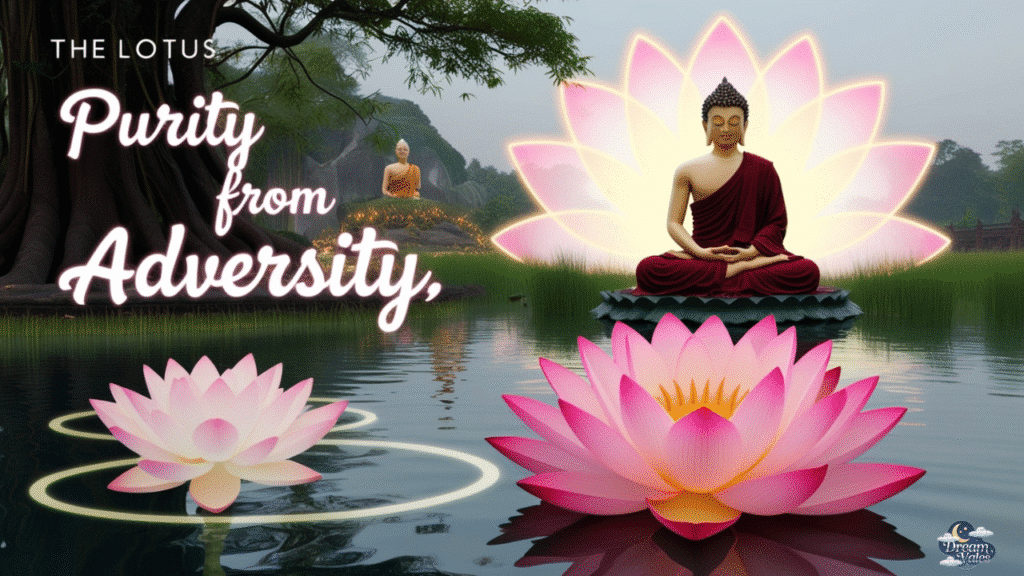
This sacred flower demonstrates how beauty and purity can emerge from the most challenging circumstances. The plant’s roots anchor in muddy pond bottoms while its pristine petals float serenely on the surface.
Buddhist teachings use the lotus as a metaphor for spiritual growth and enlightenment. Just as the flower transforms mud into beauty, human consciousness can transform suffering into wisdom.
The various stages of the lotus—from seed to full bloom—represent different levels of spiritual development. Hindu tradition associates different colored lotus flowers with specific deities and qualities.
The pink lotus represents the supreme deity, while the white lotus symbolizes mental purity and spiritual perfection. The blue lotus signifies the victory of spirit over material desires, embodying the triumph of knowledge over ignorance.
| Lotus Color | Symbolic Meaning | Associated Deity |
|---|---|---|
| 🌸 Pink | Supreme divinity | Buddha |
| 🤍 White | Mental purity | Saraswati |
| 💙 Blue | Wisdom triumph | Manjushri |
| ❤️ Red | Love and compassion | Avalokiteshvara |
| 💜 Purple | Mystical nature | Tibetan Buddhism |
| 💛 Golden | Complete enlightenment | Various Buddhas |
| 🌈 Multi-colored | Universal compassion | Padmasambhava |
| 🖤 Black | Rare spiritual power | Tantric traditions |
The lotus appears in countless works of Eastern art, from ancient temple carvings to contemporary paintings. Artists use its image to convey themes of transformation, purity, and spiritual awakening.
The flower’s perfect symmetry and graceful form make it an ideal subject for meditation and contemplation. Modern wellness culture has embraced the lotus as a symbol of personal growth and resilience.
Yoga studios, meditation centers, and holistic healing practices frequently incorporate lotus imagery. The symbol reminds practitioners that growth often requires navigating difficult circumstances before achieving peace and clarity.
Mandala about Sacred Circles of Wholeness
The mandala represents one of humanity’s most profound attempts to visualize cosmic order and spiritual completeness. These sacred geometry designs appear across cultures, from Tibetan sand paintings to Native American medicine wheels. The circular form suggests infinity, unity, and the eternal cycle of existence.
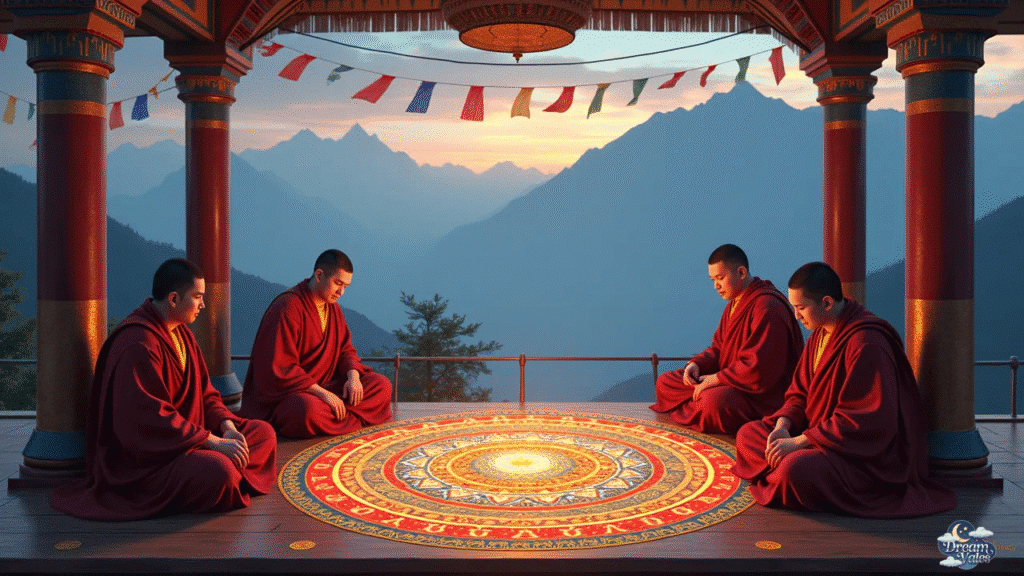
Carl Jung discovered the therapeutic power of mandalas through his own psychological work. He found that creating these circular designs helped integrate unconscious material and promote psychological healing.
Jung’s patients spontaneously drew mandala-like images during periods of personal transformation and crisis resolution. Tibetan Buddhist monks create intricate sand mandalas as spiritual practice and meditation.
These temporary artworks take weeks to complete, only to be swept away upon completion. This process teaches impermanence while the creation itself serves as a form of moving meditation and prayer.
The geometric patterns within mandalas often follow mathematical principles found throughout nature.
The golden ratio, fibonacci sequences, and other natural proportions appear repeatedly in these designs. This connection between sacred art and natural law suggests deeper universal principles governing both spiritual and physical reality.
| Mandala Element | Spiritual Meaning | Psychological Function |
|---|---|---|
| 🌕 Center point | Divine consciousness | Integrated self |
| 🔄 Circular boundary | Unity and wholeness | Personal boundaries |
| 🔺 Triangular forms | Dynamic energy | Active transformation |
| 🔲 Square patterns | Earthly stability | Grounded foundation |
| 🌟 Radiating lines | Spiritual expansion | Growth orientation |
| 🎨 Color variations | Emotional spectrum | Mood regulation |
| 🌸 Floral motifs | Natural beauty | Aesthetic appreciation |
| 🔁 Repetitive patterns | Meditative focus | Concentrated attention |
Contemporary applications of mandala principles extend into architecture, urban planning, and digital art. Architects design buildings with mandala-inspired layouts to create spaces that feel naturally harmonious.
City planners use these concepts to create public spaces that encourage community gathering and social cohesion.
Digital artists and designers create interactive mandalas using computer algorithms and generative art techniques. These modern interpretations maintain the essential qualities of traditional mandalas while exploring new possibilities for color, movement, and user interaction.
If you’re interested, check out: 17 Symbols of Forgiveness Around the World
Om about The Sound of Universal Harmony
The Om symbol represents the primordial sound from which all creation emerges according to Hindu and Buddhist traditions. This sacred syllable encompasses the past, present, and future in a single utterance.
The visual representation of Om captures the vibrational quality of this fundamental sound through its curved, flowing form.
The three curves of the Om symbol represent different states of consciousness: waking, dreaming, and deep sleep. The dot above signifies the fourth state—pure consciousness that underlies all other experiences.
The crescent below the dot represents the veil of illusion that separates individual consciousness from universal awareness. Scientific research into the effects of chanting Om reveals measurable changes in brain activity and stress hormone levels.
The vibrational frequency of this sound appears to activate the vagus nerve, promoting relaxation and emotional regulation. These findings provide empirical support for ancient claims about Om’s therapeutic properties.
Western adoption of Om in yoga studios and meditation centers demonstrates the symbol’s cross-cultural appeal.
Many practitioners report feeling a sense of connection and peace when encountering this ancient symbol. Its simple yet profound design makes it easily recognizable across different cultural contexts.
| Om Component | Traditional Meaning | Modern Interpretation |
|---|---|---|
| 🌅 First curve | Waking consciousness | Daily awareness |
| 🌙 Second curve | Dream state | Subconscious mind |
| 🌑 Third curve | Deep sleep | Unconscious depths |
| ⚫ Dot (Bindu) | Pure consciousness | Transcendent awareness |
| 🌙 Crescent | Veil of illusion | Ego boundaries |
| 🎵 Sound vibration | Cosmic frequency | Universal connection |
| ✨ Sacred geometry | Divine proportion | Natural harmony |
| 🕯️ Meditative focus | Spiritual practice | Mindfulness training |
Japanese Koi about Swimming Upstream Together
The koi fish carries deep symbolic meaning in Japanese culture, representing perseverance, transformation, and harmony through diversity.
These colorful carp demonstrate how individual beauty contributes to collective harmony when koi swim together in groups. Their graceful movements create living mandalas in pond waters, constantly shifting yet maintaining overall balance.
Legend tells of koi that swam upstream against powerful currents to reach the Dragon Gate waterfall. Those that succeeded in this journey transformed into dragons, representing the rewards of persistent effort and spiritual growth.
This story emphasizes how harmony requires both individual strength and collective support. The various colors of koi carry specific meanings within Japanese symbolism. Golden koi represent wealth and prosperity, while black koi symbolize overcoming adversity.
Red koi embody love and passion, blue koi suggest tranquility and peace. When different colored koi swim together, they create a visual representation of unity in diversity.
Modern koi breeding has developed into both an art form and a meditation practice. Breeders spend years developing specific color patterns and fin shapes, treating each fish as a living artwork.
The patient cultivation required reflects broader Japanese aesthetic principles emphasizing harmony between human intention and natural processes.
Western Harmony Traditions
Western civilization has developed its own rich tradition of harmony symbols, often drawing from Greek and Roman mythology, Christian symbolism, and Celtic artistic traditions.
These symbols reflect Western values of individual freedom balanced with social responsibility, democratic ideals, and the integration of classical and Christian worldviews.
The Western approach to harmony often emphasizes resolution of conflict through reason, law, and moral principle.
This philosophical framework creates symbols that represent achieved peace rather than dynamic balance. Such differences provide insight into how cultural values shape symbolic expression.
The Dove about Messenger of Peace
The dove has served as humanity’s most recognizable peace symbol across Western culture for over two millennia.
Biblical accounts of Noah’s dove returning with an olive branch established this bird as a messenger of divine peace and hope. The image suggests that even after the most devastating conflicts, renewal and reconciliation remain possible.

Greek and Roman mythology also featured doves as sacred to Aphrodite and Venus, goddesses of love and beauty.
This association connected the dove with harmonious relationships and the power of love to overcome conflict. The bird’s gentle nature and soft cooing sound reinforced its peaceful associations across cultures.
The modern peace movement adopted the dove as its primary symbol during the 20th century. Pablo Picasso’s stylized dove drawings became iconic images of anti-war sentiment and nuclear disarmament activism.
The simplicity of the dove’s silhouette made it perfect for protest signs, political cartoons, and public art installations.
Contemporary usage of dove symbolism extends beyond political contexts into wedding ceremonies, funeral services, and spiritual practices.
The symbol appears on everything from jewelry to architecture, maintaining its essential meaning while adapting to diverse applications. Its universal recognition makes it an effective tool for cross-cultural communication about peace.
| Cultural Context | Dove Symbolism | Modern Usage |
|---|---|---|
| ⛪ Biblical tradition | Divine messenger | Religious ceremonies |
| 🏛️ Greek mythology | Love goddess sacred | Wedding imagery |
| 🕊️ Peace movement | Anti-war symbol | Political protests |
| 💒 Wedding customs | Marital harmony | Ceremony releases |
| ⚰️ Funeral rites | Soul’s journey | Memorial services |
| 🎨 Artistic expression | Pure beauty | Contemporary art |
| 🏢 Corporate logos | Peaceful business | Brand identity |
| 🌍 International relations | Diplomatic peace | United Nations |
Celtic Knots about Endless Connections
Celtic knotwork represents one of Europe’s most sophisticated artistic traditions for expressing interconnectedness and eternal continuity.
These intricate patterns, with no beginning or end, symbolize the endless cycle of life, death, and rebirth. The interwoven designs suggest that all existence is fundamentally connected through invisible threads of relationship.
Pre-Christian Celtic spirituality viewed the world as an interconnected web where every action affected the whole. Celtic knots visually represent this worldview through their complex interlacing patterns.
The mathematical precision required to create these designs reflects the Celtic understanding of cosmic order underlying apparent chaos.
Christian missionaries adapted Celtic knotwork for religious purposes, creating illuminated manuscripts like the Book of Kells.
These sacred texts transformed pagan symbols into expressions of Christian theology while maintaining their essential meaning. The endless knots came to represent eternal life through divine grace and the unbreakable bonds of faith.
Archaeological discoveries continue to reveal new examples of Celtic knotwork in metalwork, stone carving, and textile art.
These findings demonstrate the widespread use of these symbols across Celtic territories and their importance in daily life. The patterns appear on everything from jewelry to architectural elements, suggesting their deep cultural significance.
Modern interest in Celtic spirituality has revived appreciation for these ancient symbols. Contemporary jewelry designers, tattoo artists, and graphic designers frequently incorporate Celtic knot patterns into their work.
The symbols appeal to people seeking connection with ancestral traditions and natural cycles.
| Knot Type | Traditional Meaning | Contemporary Use |
|---|---|---|
| 🔗 Trinity knot | Triple goddess | Christian trinity |
| ♾️ Endless knot | Eternal life | Wedding rings |
| 🌿 Shamrock knot | Irish heritage | Cultural identity |
| 💝 Love knot | Romantic bond | Anniversary gifts |
| 🛡️ Shield knot | Protection | Personal talismans |
| 🌳 Tree knot | Life connection | Environmental causes |
| 🌀 Spiral knot | Life journey | Personal growth |
| 🔄 Circle knot | Unity wholeness | Community symbols |
The Swan Grace Under Pressure
The swan has symbolized grace, beauty, and transformation across Western literature and art for centuries. These elegant birds demonstrate how serenity can be maintained even while working hard beneath the surface.
The image of a swan gliding effortlessly across water while paddling vigorously below serves as a metaphor for maintaining harmony during challenging times.
Greek mythology tells of Zeus transforming into a swan to court Leda, creating stories that link swans with divine beauty and transformative power.
The constellation Cygnus represents the swan in the night sky, connecting these birds with cosmic harmony and celestial navigation. Such mythological associations elevated swans beyond mere animals to symbols of spiritual transcendence.
Ballet and classical music have extensively used swan imagery to represent the transformation from earthly concerns to spiritual beauty.
Tchaikovsky’s Swan Lake remains one of the most beloved ballets, using the swan’s dual nature—beautiful yet sometimes threatening—to explore themes of love, betrayal, and redemption. The graceful movements of ballet dancers mirror the swan’s elegant form.
Contemporary brand identity often employs swan symbolism to suggest luxury, refinement, and effortless elegance.
Companies in fashion, hospitality, and luxury goods use swan imagery to communicate these values to consumers. The symbol’s associations with exclusivity and sophistication make it particularly effective for premium market positioning.
You might find this interesting: Wind Symbolism Across Cultures and Religions Around The World
Natural World Harmony Symbols
Nature provides humanity’s most fundamental symbols of harmony through patterns, cycles, and relationships observed in the natural world.
These organic symbols speak to our deepest connections with the earth and remind us that human harmony must align with natural principles. They offer guidance for sustainable living and ecological awareness.
The mathematical precision found in natural forms—from flower petals to galaxy spirals—suggests underlying universal principles governing both physical and spiritual harmony.
These patterns appear consistently across different scales and contexts, implying fundamental laws that govern harmonious relationships.
Tree of Life about Roots, Trunk, and Branches
The Tree of Life appears across numerous cultures as a symbol of interconnected existence, growth, and the bridge between earth and heaven.
This powerful image represents how all life shares common roots while growing in diverse directions. The tree’s annual cycle of growth, dormancy, and renewal mirrors human experiences of development, rest, and regeneration.
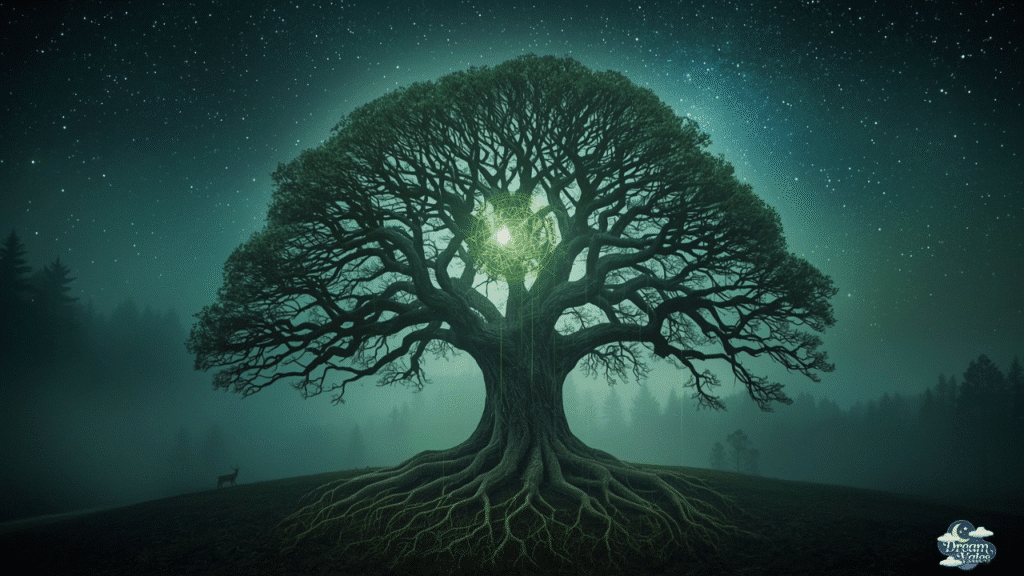
Ancient mythologies often placed a sacred tree at the center of the world, connecting the underworld, earthly realm, and heavens.
Norse mythology’s Yggdrasil, the Kabbalah’s Sephirotic tree, and various shamanic traditions all feature world trees that serve as cosmic axes. These traditions recognize trees as mediators between different levels of existence.
Evolutionary biology has provided scientific support for the Tree of Life metaphor through phylogenetic research. All living species share common ancestors, creating actual family trees that demonstrate biological interconnectedness.
This scientific understanding validates ancient intuitions about the fundamental unity underlying apparent diversity.
Modern environmental movements use Tree of Life imagery to communicate messages about ecological interdependence and conservation.
The symbol reminds viewers that human welfare depends on maintaining healthy ecosystems and preserving biodiversity. Climate change activism frequently employs tree symbolism to advocate for forest protection and sustainable practices.
| Tree Tradition | Cultural Origin | Symbolic Meaning |
|---|---|---|
| 🌳 Yggdrasil | Norse mythology | World axis |
| 🕎 Sephirotic tree | Jewish Kabbalah | Divine emanation |
| 🌲 Bodhi tree | Buddhist tradition | Enlightenment |
| 🍎 Tree of Knowledge | Biblical Genesis | Moral awareness |
| 🌴 Cosmic tree | Shamanic cultures | Spirit world access |
| 🎋 Bamboo | East Asian cultures | Flexibility strength |
| 🌿 Celtic tree | Celtic spirituality | Sacred groves |
| 🌊 Mangrove | Tropical cultures | Adaptation resilience |
Sun and Moon Celestial Dance
The relationship between sun and moon has inspired harmony symbols across all human cultures. These celestial bodies demonstrate perfect complementarity—the sun’s active, life-giving energy balanced by the moon’s receptive, reflective influence.
Their regular cycles provide rhythm and structure for both natural processes and human activities. Ancient astronomical observations led to sophisticated calendar systems based on solar and lunar cycles.
These calendars enabled agricultural planning, religious festivals, and social organization. The harmony between solar and lunar time-keeping reflects humanity’s need to balance different types of temporal experience—linear progression and cyclical renewal.
Gender symbolism often associates the sun with masculine qualities and the moon with feminine aspects, though different cultures reverse these associations.
This celestial pairing represents the necessity of balancing different energy types within individuals and communities. The symbols remind us that harmony requires both active engagement and receptive awareness.
Romantic poetry and art extensively use sun and moon imagery to represent perfect love partnerships. The idea that lovers are like sun and moon—different yet complementary—appears across literary traditions.
These metaphors suggest that lasting relationships require balancing contrasting qualities rather than seeking identical personalities.
Contemporary environmental awareness recognizes how solar and lunar cycles affect everything from ocean tides to animal behavior.
Understanding these natural rhythms helps humans align personal and social activities with ecological patterns. Such alignment represents a form of harmony between human culture and natural systems.
| Celestial Body | Traditional Qualities | Modern Applications |
|---|---|---|
| ☀️ Sun | Active, masculine, life-giving | Solar energy, vitamin D |
| 🌙 Moon | Receptive, feminine, mysterious | Lunar calendars, tides |
| 🌅 Dawn | New beginnings | Fresh starts |
| 🌇 Sunset | Completion, reflection | Evening meditation |
| 🌑 New moon | Potential, planning | Goal setting |
| 🌕 Full moon | Manifestation, completion | Harvest festivals |
| 🌓 Quarter moon | Balance, decision | Mid-point assessment |
| ⭐ Stars | Guidance, dreams | Navigation, inspiration |
Water Universal Solvent and Symbol
Water serves as perhaps the most fundamental harmony symbol across all cultures due to its essential role in life and its unique physical properties.
This universal solvent can take any shape while maintaining its essential nature, demonstrating perfect adaptability without loss of identity. Water’s ability to flow around obstacles while gradually wearing them away suggests how gentle persistence can overcome rigid resistance.
Purification rituals involving water appear in virtually every religious tradition. Baptism, ritual bathing, and ceremonial washing represent spiritual cleansing and renewal.
Water’s capacity to dissolve impurities makes it an ideal metaphor for spiritual practices that clear away mental and emotional obstacles to peace and clarity.
The sound of flowing water—whether from streams, fountains, or ocean waves—has measurable calming effects on human nervous systems.
This acoustic phenomenon explains why water features appear in meditation gardens, healing spaces, and therapeutic environments. The rhythmic sound of water creates natural white noise that promotes relaxation and focus.
Feng shui principles emphasize water’s role in creating harmonious environments through proper flow and placement. Stagnant water represents blocked energy, while rushing water suggests excessive activity.
The ideal involves gentle, meandering water flow that nourishes without overwhelming. These principles apply metaphorically to human energy management and life balance.
Modern environmental crises related to water scarcity and pollution have elevated water’s symbolic importance.
Clean water has become a symbol of social justice, environmental protection, and global cooperation. The universal need for water creates common ground across political and cultural boundaries.
Modern Harmony Expressions
Contemporary society has created new expressions of harmony symbols while adapting traditional ones for modern contexts.
Digital media, global communication, and multicultural awareness have expanded the vocabulary of harmony symbolism. These new forms reflect current challenges and opportunities for creating peace and unity.
The democratization of symbol creation through digital tools allows individuals and communities to develop personalized harmony expressions. Social media platforms enable rapid sharing and evolution of symbolic meaning.
This dynamic process creates both opportunities for greater understanding and challenges in maintaining coherent symbolic communication.
Unity Candle Illuminating Togetherness
The unity candle ceremony has become a popular wedding tradition representing how two separate lives join to create shared illumination while maintaining individual identity.
This modern ritual demonstrates how harmony can be achieved through conscious choice and ceremonial commitment. The symbolism emphasizes that unity enhances rather than diminishes individual uniqueness.
The ceremony typically involves lighting a central candle from two smaller flames, representing how partnership creates something greater than the sum of its parts.
The individual candles often remain lit, symbolizing that marriage involves union without loss of personal identity. This balance between togetherness and individuality reflects contemporary values about healthy relationships.
Interfaith and multicultural weddings have adapted the unity candle ceremony to incorporate diverse religious and cultural traditions.
Some couples use different colored candles to represent their respective backgrounds, while others include family members in the lighting ceremony. These adaptations demonstrate how modern symbols can bridge cultural differences.
Beyond wedding ceremonies, unity candle symbolism appears in memorial services, community gatherings, and peace ceremonies.
The image of shared light resonates across contexts where people seek to create connection and mutual support. The symbol’s flexibility allows for creative adaptation to various circumstances and purposes.
| Ceremony Type | Candle Symbolism | Cultural Significance |
|---|---|---|
| 💒 Wedding ceremony | Marital union | Commitment partnership |
| ⚰️ Memorial service | Shared remembrance | Community grief support |
| 🕊️ Peace gathering | Collective hope | Social unity |
| 🎓 Graduation ritual | Shared achievement | Educational community |
| 🏥 Healing ceremony | Therapeutic support | Medical recovery |
| 🌍 Earth Day event | Environmental unity | Ecological awareness |
| 🎂 Birthday celebration | Life affirmation | Personal milestones |
| 🎄 Holiday tradition | Seasonal connection | Cultural continuity |
World Globe Planetary Perspective
The image of Earth as a blue marble floating in space has become one of the most powerful harmony symbols of the modern era.
This perspective, first captured by Apollo astronauts, fundamentally changed human consciousness about planetary unity and interconnectedness. The globe symbol represents how environmental and social challenges require global cooperation for effective solutions.
The “Overview Effect” describes the cognitive shift experienced by astronauts when viewing Earth from space. This perspective reveals the artificial nature of political boundaries and emphasizes the planet’s fragility and unity.
The globe symbol attempts to communicate this transformative perspective to those who cannot physically experience spaceflight.
International organizations use globe symbolism to represent global cooperation and universal human values. The United Nations logo features a world map surrounded by olive branches, combining geographic unity with peace symbolism.
This combination suggests that lasting peace requires both local and global perspectives on shared challenges. Digital connectivity has made globe symbolism increasingly relevant as people experience real-time global communication and shared virtual spaces.
Social media platforms, international news coverage, and collaborative online projects create daily experiences of global interconnection. The globe symbol captures this new reality of planetary consciousness.
Environmental movements use globe imagery to communicate messages about climate change, biodiversity loss, and ecological interdependence.
The symbol reminds viewers that environmental problems transcend national boundaries and require coordinated global responses. Earth Day celebrations consistently feature globe symbolism to reinforce these messages.
Continue on your article: Goat Symbolism & Meaning
Digital Age Harmony Symbols
The internet age has created entirely new categories of harmony symbols through emoji, digital art, and virtual reality experiences.
These symbols evolve rapidly through user interaction and cultural exchange. The peace sign emoji, heart symbols, and various hand gestures create instant emotional communication across language barriers.
Social media platforms have enabled the viral spread of harmony symbols during times of crisis or celebration.
The safety check feature on Facebook, rainbow flag overlays for marriage equality, and various awareness ribbons demonstrate how digital tools amplify symbolic communication. These new forms of symbolic expression reflect contemporary values and concerns.
Virtual and augmented reality technologies offer unprecedented opportunities for creating immersive harmony experiences. Users can walk through digital mandalas, participate in virtual peace ceremonies, or explore three-dimensional representations of ancient symbols.
These technologies expand the possibilities for symbolic communication beyond traditional visual media.
Artificial intelligence and algorithmic art generation create new forms of harmony symbols based on mathematical principles and user preferences.
These computer-generated symbols often reveal unexpected patterns and combinations that human designers might not discover. The collaboration between human creativity and machine intelligence opens new frontiers for symbolic expression.
| Digital Platform | Harmony Expression | Cultural Impact |
|---|---|---|
| 📱 Social media | Peace emojis | Global communication |
| 🎮 Video games | Cooperative gameplay | Collaborative skills |
| 🌐 Virtual reality | Immersive meditation | Expanded consciousness |
| 🤖 AI art generation | Algorithmic symbols | New aesthetic forms |
| 📺 Streaming platforms | Global content sharing | Cultural exchange |
| 💬 Messaging apps | Visual communication | Emotional expression |
| 🎵 Music platforms | Collaborative playlists | Shared experiences |
| 🖥️ Online communities | Digital ceremonies | Virtual gatherings |
Cultural Appropriation vs Appreciation
The global exchange of harmony symbols raises important questions about cultural appropriation versus respectful appreciation.
Understanding these distinctions requires sensitivity to power dynamics, historical context, and the perspectives of symbol originators. Responsible engagement with cultural symbols involves education, acknowledgment, and appropriate attribution.
Sacred symbols from specific religious or cultural traditions require particular care in their use and interpretation. Using these symbols without understanding their deeper meaning or cultural context can trivialize important spiritual practices.
Education about proper usage and respect for source traditions helps prevent harmful appropriation.
Supporting communities that created traditional harmony symbols involves more than simply using their imagery.
Purchasing authentic artwork from native artisans, supporting cultural preservation efforts, and learning about ongoing struggles of indigenous peoples demonstrates genuine appreciation rather than superficial adoption of aesthetic elements.
The line between appreciation and appropriation often depends on context, intention, and impact. Using symbols in educational settings with proper attribution generally constitutes appropriate appreciation.
Commercial exploitation without compensation or acknowledgment more clearly represents problematic appropriation. Each situation requires careful consideration of these factors.
Harmony Symbols in Contemporary Design
Modern design applications of harmony symbols span architecture, graphic design, fashion, and digital interfaces. These applications demonstrate how ancient wisdom can inform contemporary aesthetic choices while serving practical functions.
The challenge involves maintaining symbolic integrity while adapting to new media and purposes. Brand identity designers increasingly incorporate harmony symbols to communicate values like sustainability, inclusivity, and social responsibility.
Companies use these symbols to connect with consumers who prioritize ethical business practices and environmental awareness. The symbolic language helps brands communicate complex values through simple visual elements.
Interior design applications of harmony symbols create spaces that promote relaxation, focus, and positive social interaction.
Feng shui principles guide furniture arrangement and color choices, while mandala-inspired patterns appear in carpets, wallpaper, and architectural details. These design elements aim to create environments that support human well-being.
Public art installations often feature large-scale harmony symbols designed to bring communities together and promote social cohesion.
These projects demonstrate how symbolic art can serve civic functions while beautifying urban environments. The scale and accessibility of public art maximize the potential impact of harmony symbolism.
| Design Application | Symbolic Function | Practical Benefit |
|---|---|---|
| 🏢 Corporate logos | Brand value communication | Consumer trust |
| 🏠 Interior decoration | Environmental harmony | Stress reduction |
| 👗 Fashion design | Personal expression | Cultural identity |
| 🎨 Public art | Community unity | Social cohesion |
| 💻 Digital interfaces | User experience | Intuitive navigation |
| 🏗️ Architecture | Spatial harmony | Functional beauty |
| 📱 App iconography | Instant recognition | User engagement |
| 🛍️ Product packaging | Emotional connection | Purchase decisions |
The Neuroscience of Visual Harmony
Brain imaging studies reveal how harmony symbols affect neural activity differently than random or chaotic images.
The visual cortex processes symmetrical patterns more efficiently, while the limbic system responds to harmonious compositions with reduced stress signals. These findings provide scientific validation for ancient intuitions about the power of symbolic harmony.
Research into meditation and contemplative practices shows that focusing on harmony symbols activates brain regions associated with attention, emotional regulation, and self-awareness. Regular exposure to these symbols appears to strengthen neural pathways involved in stress management and cognitive flexibility.
Such findings suggest therapeutic applications for harmony symbolism. Color psychology research demonstrates how specific color combinations in harmony symbols affect mood, attention, and behavior.
Warm colors tend to energize and stimulate, while cool colors promote relaxation and introspection. Understanding these effects allows designers to create symbols that produce desired psychological responses in viewers.
The mirror neuron system may explain why harmony symbols promote empathy and social connection. When we view symbols representing unity and peace, mirror neurons fire as if we were experiencing those states ourselves.
This neurological mechanism could partially account for the social bonding effects of shared symbolic experiences. Studies of aesthetic experience reveal that harmony symbols activate reward centers in the brain similar to those stimulated by music, food, and social connection.
This suggests that exposure to beautiful, harmonious imagery fulfills fundamental human needs for pleasure and meaning. The neurological response helps explain why these symbols appear across all cultures.
Creating Personal Harmony Symbols
Individual development of personal harmony symbols can serve therapeutic and spiritual functions while reflecting unique life experiences and values.
This creative process encourages self-reflection and intentional meaning-making. Personal symbols often combine elements from various traditions with individual innovations and discoveries.
The process of creating personal symbols involves identifying core values, meaningful experiences, and aspirational qualities.
Sketching, collaging, and digital design tools can help translate these concepts into visual form. The creative process itself often provides insights about personal growth and life direction.
Family and community symbols can emerge from collaborative creative processes that honor shared values while celebrating individual contributions.
These collective symbols strengthen group identity and provide focal points for ceremonies and celebrations. The participatory creation process builds relationships while producing meaningful artistic expressions.
Digital tools have democratized symbol creation by providing accessible design software and online sharing platforms. Individuals can create, modify, and share personal harmony symbols without specialized artistic training.
This technological accessibility has led to an explosion of personal symbolic expression across social media and digital art platforms.

